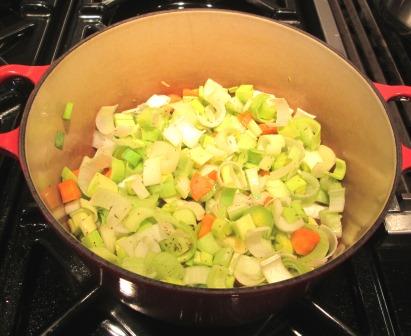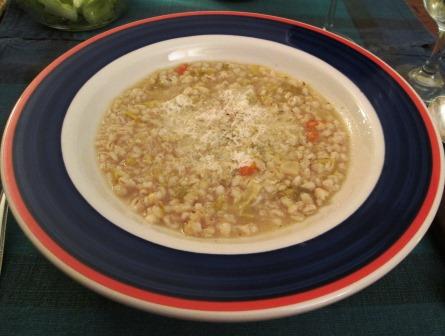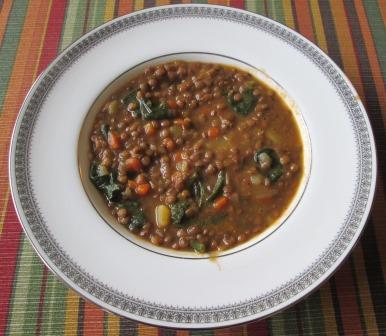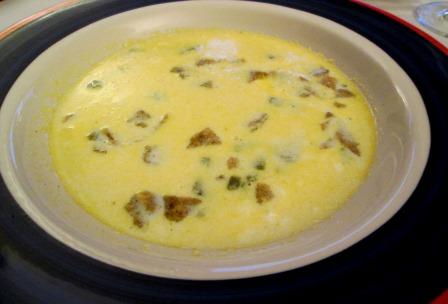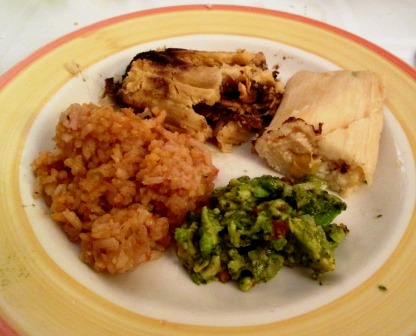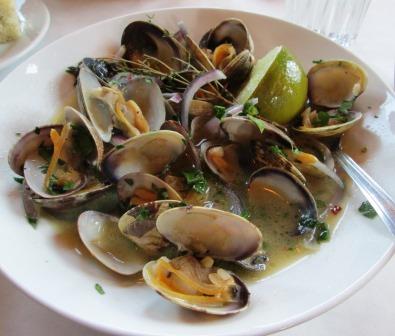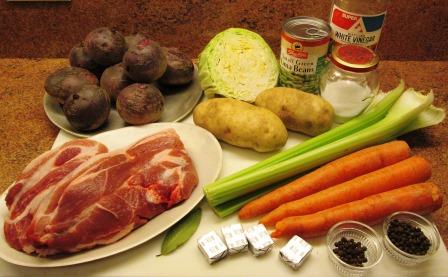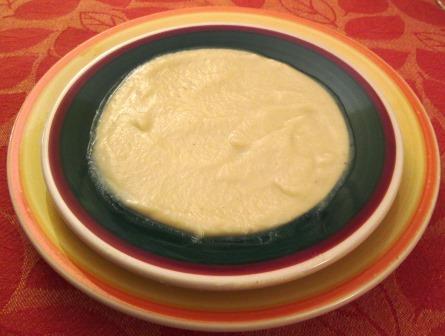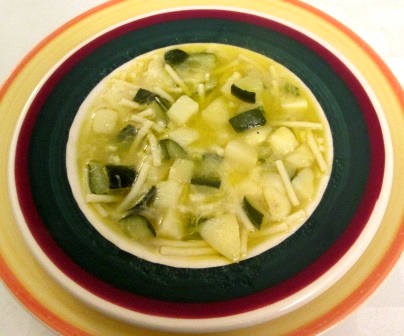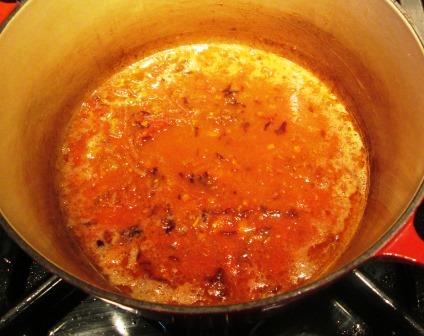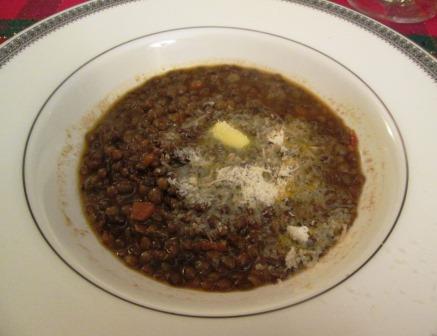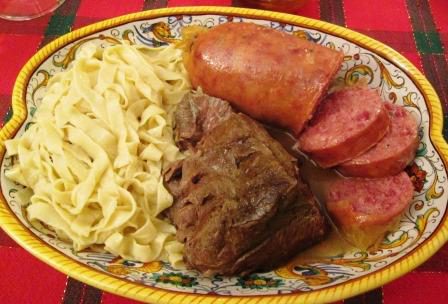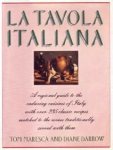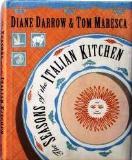Yes, spring is just a week away, but winter has not started loosening its grip yet. There are still days that are so raw and cold and windy that I can hardly force myself to get out of the house even for essential errands. When I do, nothing thaws me out and comforts me like coming home to a bowl of hearty homemade soup.
 I like trying new soup recipes, as regular readers of this blog should know: I’ve published posts about more than 30 kinds. One of my good sources is Michele Scicolone’s Italian Vegetable Cookbook. Its soup chapter contains 19 recipes, several of which I’ve made. I wrote about two of them here. This time around, I tried two more.
I like trying new soup recipes, as regular readers of this blog should know: I’ve published posts about more than 30 kinds. One of my good sources is Michele Scicolone’s Italian Vegetable Cookbook. Its soup chapter contains 19 recipes, several of which I’ve made. I wrote about two of them here. This time around, I tried two more.
*
First I made a simple Barley and Leek Soup, which the recipe said would serve four. I started by chopping two leeks, a stalk of celery, and a carrot, and sauteeing them in olive oil along with a sprinkling of thyme.
.
.
Next I was to add a cup of barley and 6 cups of broth, bring it to a simmer, and cook for 45 minutes, or until the barley was tender. Tom, who had been looking on with a knife expert’s interest while I chopped the vegetables, totally disbelieved the quantity of barley. “That’s going to absorb all the liquid and swell to triple the amount!” he warned. I knew he was probably right, but I was determined to follow the recipe, and I did.
It was way too much barley. It swelled to about four times its bulk and indeed absorbed all the liquid, ending up as thick as a risotto. The recipe didn’t even say to cover the pot, but I did, given that long cooking time. It did say I could add a little water if it was too thick at the end. A little? I had to stir in two whole cups of water, just to turn it back into a soup.
Diluted down, seasoned generously with salt and pepper, and topped with grated parmigiano, the soup came out well. I would have liked the leek to be more prominent: less barley would have made for a better balance. But the soup’s mild flavor and soft texture were very comforting.
.
.
And it’s a good thing that it was a good soup, because that four-serving recipe made enough for at least eight. Happily, soups freeze well.
*
A few days later, with my soup jones still pestering me, I turned to the book’s Lentil, Potato and Spinach Soup. This recipe was to serve 4 to 6. With caution born of the preceding experience, I considered the fact that it called for a whole cup of lentils and decided to make half a recipe’s worth.
This time, I put chopped carrot, celery, and onion, plus rosemary and thyme, into the soup pot with olive oil and cooked for 10 minutes to soften the vegetables.
.
.
I added a minced clove of garlic and continued cooking for a minute; stirred in half a cup of lentils and a tablespoon of tomato paste; and added a diced all-purpose potato, salt, pepper, and three cups of water. As before, I simmered the soup for 45 minutes, stirring often to keep the lentils from sticking to the bottom of the pot. And as before, the lentils behaved just like the barley and absorbed so much water they made a porridge. I had to add another whole cup of water to bring it back to soup.
For the last step, I tore up enough cleaned spinach leaves to pack into a one-cup measure, stirred them into the soup, and continued cooking just long enough to wilt them. At serving time, as the recipe suggested, I drizzled olive oil onto each bowlful.
.
This was also a good soup – a little more complex in flavor than the previous one. The lentils were the prominent ingredient, with the spinach and potatoes offering nice color and texture contrasts. And, as I’d suspected it would, the “two-serving” half recipe made four generous bowlfuls.
I have to wonder if there was a copyediting glitch somewhere in that book. But look on the bright side: With people to feed, a recipe that makes too much is better than one that makes too little.
